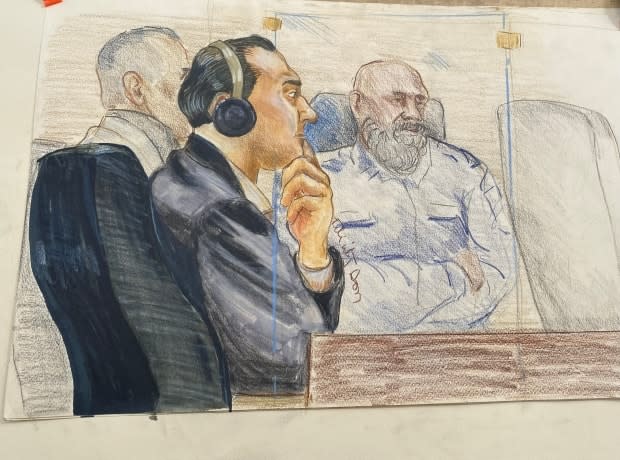B.C. teen had injuries possibly caused by dragging, murder trial hears

WARNING: This story contains graphic content and may affect those who have experienced sexual violence or know someone affected by it.
The doctor who studied the body of a B.C. teen said she had injuries that could have been caused by being dragged before she was killed.
On Tuesday, forensic pathologist Dr. Jason Morin further detailed injuries found on the 13-year-old victim's body, including small scrapes on the back of her head that weren't likely to be caused by a blunt strike to the head.
When asked by defence lawyer Ben Lynskey if they were consistent with someone being dragged, Morin said it was possible. He also described long, vertical scrapes on the victim's legs that could have also been caused by dragging.
Ibrahim Ali is on trial for first-degree murder and has pleaded not guilty. In the Crown's opening statement, prosecutors said the teenage victim was passing through Burnaby Central Park, likely wearing earbuds, when she was attacked and dragged into the woods before she was sexually assaulted and strangled to death.
The Crown contends that DNA recovered from the crime scene belonged to Ali.
In his autopsy report, the forensic pathologist concluded that the teen died "secondary to strangulation," meaning strangulation was the primary cause and other causes were secondary to that.
He's since told the jury he's certain in his conclusion, noting that other injuries discovered were relatively minor.
His report references the presence of facial petechial hemorrhages or minor, burst blood vessels beneath the victim's chin and eyes, consistent with strangulation injuries.
On Tuesday, Lynskey asked if petechial hemorrhages can have other causes. Morin said they can, particularly when someone exerts pressure in their abdominal area, but said that the dense prevalence of petechiae on the victim's face was indicative of strangulation.
Morin said about 90 percent of strangulation cases produce petechiae on the victim's face.

Injuries examined
During cross-examination, Lynskey questioned Morin on the discovery of sperm found inside the victim's body.
Morin told the jury the cells could survive for as long as seven days before breaking down. He was then questioned as to why he never measured the amount that was found.
Morin said that the measurements wouldn't be accurate, particularly because sample swabs had already removed some from the body.
"We'd have a number that might not mean anything," said Morin.
When questioned over the injuries the victim suffered that could be indicative of either forced or unforced sexual intercourse. Morin said he couldn't draw a definitive conclusion.
The Crown is expected to later call a witness who is an expert in sexual assault injury.
Juror excused
One juror was excused from their trial duty after Justice Lance Bernard announced the previous end date was no longer feasible. The trial was scheduled to wrap up by June 30. But various delays have resulted in the date being extended, possibly into September.
He also addressed the jury on Tuesday, acknowledging that several of them had availability concerns over the summer and in the fall.
He suggested that, given the new length of the trial, that certain accommodations will be made for those who are unavailable and that all jury members would be excused over those dates.
"Everyone will get time off," he said.
Support is available for anyone who has been sexually assaulted. You can access crisis lines and local support services through this Government of Canada website or the Ending Violence Association of Canada database. If you're in immediate danger or fear for your safety or that of others around you, please call 911.


